Get PeakVisor App
Sign In
Search by GPS coordinates
- Latitude
- ° ' ''
- Longitude
- ° ' ''
- Units of Length

Yes
Cancel
Share ×

Scan the QR code and open PeakVisor on your phone
❤ Wishlist ×
Choose
Delete
Suppose you’re on the lookout for a place where cliffs the sea; the Karaburun-Sazan Marine National Park in southern Albania is the place to go. The Adriatic and Ionian Seas surround historic bays and beautiful coves. There are 12 named mountains in Karaburun-Sazan Marine National Park. The highest and most prominent mountain is Gryka e Xhehenemit (330 m/ 1,082 ft).

The Karaburun-Sazan Marine Park, also known as Parku Kombetar Detar Karaburun-Sazan, is located in Vlorë County in southwestern Albania. It covers an area of over 125 sq. km (48.53 sq mi). The park encompasses the Karaburun Peninsula and Sazan Island. Sazan is the country's largest island, measuring a total surface area of 5.7 sq. km (2.2 sq. mi).
The Karaburun Peninsula and Sazan Island lie between the Ionian and the Adriatic Seas. As of January 2022, the Karaburun-Sazan aquatic ecosystem is officially a Marine National Park and has increased in size.
The government also classifies the park as an Important Bird and Plant Area and a Specially Protected Area of Mediterranean Importance by the convention of Barcelona due to its unique Mediterranean Basin ecosystems and habitats.
While the Karaburun Peninsula has been a nature reserve for some time, Sazan Island was primarily a military zone. However, in July 2015, the National Coastal Agency opened Sazan Island to the public, allowing visitors to explore its natural beauty.
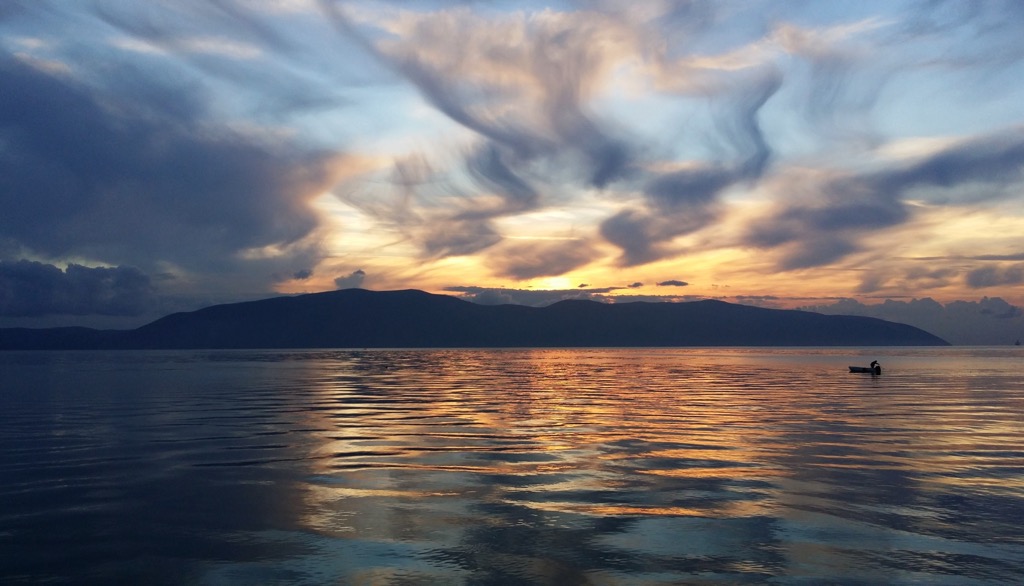
The Karaburun Peninsula is characterized by hilly terrain and is considered a geological extension of the Ceraunian Mountains, which stretch along the Ionian Sea. Hence, the surrounding territory is also known as the Ceraunian Peninsula. Interestingly, the peninsula derives its name from the Turkish phrase "black cape."
Unlike the bustling beaches along the Albanian coast, this peninsula remains untouched by permanent human habitation, preserving its wild and natural essence. Currently, the area surrounding the marine park is safeguarded by the Managed Nature Reserve Karaburun and the Llogara National Park.
The coastal landscape is characterized by its cliffs, which are composed of calcareous limestone and plunge vertically into the sea.
The region's relief consists of multiple mountains that rise to 800 m (2,600 ft) above the Adriatic Sea. The mountains sharply descend into the Ionian Sea in the western part of the Karaburun peninsula. The peninsula is separated from Sazan Island by a narrow natural channel called Mesokanali or Reza e Kanalit.
A narrow, steep platform extending from the peninsula to the Dukat Valley near Orikum defines this small range. The mountains in this area are approximately 24 km (15 mi) long and 4-7 km (2.5-4.3 mi) wide. Within the marine park, the terrain is mountainous.
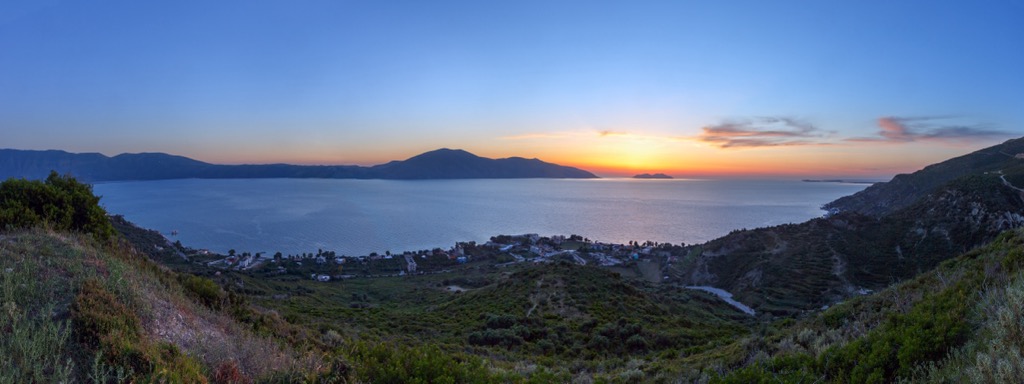
The geological formation of the peninsula occurred over various eras, resulting from the merging of Paleozoic schist formations, Mesozoic limestone, and marble deposits due to tectonic activity.
The peninsula mainly consists of carbonic limestone from the Mesozoic period, while the northwest region comprises terrigenous sediment. In the south, Pliocene rock formations and various deposits are predominant. On Sazan Island, the western part primarily contains Cretaceous rocks, while the eastern part is mainly limestone.
The favorable geological and hydrological conditions and the Mediterranean climate influenced by subtropical factors have created a wide range of habitats in the park. These habitats form an environment for diverse plant and animal species to flourish.
The park boasts a rich biodiversity, with at least 70 mammal species, 144 bird species, 36 reptile species, 11 amphibian species, and 167 invertebrate species.
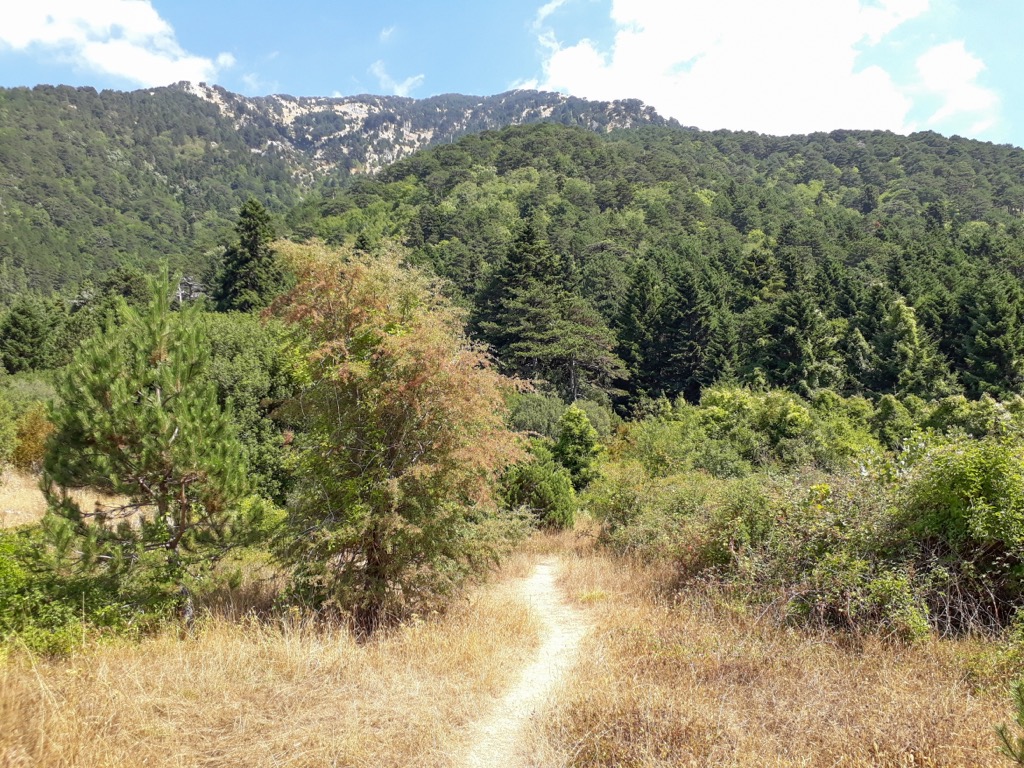
Sea turtles, seals, and dolphins inhabit the area, although their regularity is not well-documented. Nevertheless, observers have reported sightings of dolphins, including the short-beaked common dolphin, the common bottlenose dolphin, as well as the endangered sperm whale. Notably, the Mediterranean monk seal, one of the world's most endangered mammals, sometimes seeks refuge in the park's inaccessible caves and canyons.
Pristine beaches within the park serve as nesting grounds for three main species of sea turtles: loggerhead sea turtles, green sea turtles, and leatherback sea turtles.
The western coasts feature caves, canyons, and towering underwater cliffs. Furthermore, the Mediterranean tape weed provides a habitat for various macrofauna, including sponges, cnidarians, bryozoans, mollusks, and countless others. Sea fennel, statice, and caper bush adorn the cliffs.
The meadows of Posidonia oceanica, a marine plant, contribute to a high biodiversity of bottom-dwelling macrofaunae, such as sponges, cnidarians, bryozoans, mollusks, annelids, crustaceans, echinoderms, and ascidians. The park's marine area is also significant for fishing, with various species inhabiting the seabed, including small and large fish, crustaceans, and mollusks.
The land area hosts Mediterranean maquis vegetation dominated by lentisk, kermes oak, and Phoenician juniper.
The park is also home to an impressive variety of mammal species, with over 70 species documented. Some notable examples include the golden jackal, wildcat, chamois, roe deer, wild boar, badger, and otter. Smaller mammals in the park include the red squirrel, hazel dormouse, and pine vole.
The island of Sazan alone is home to eight species of bats, including the widespread Kuhl's and Nathusius pipistrelles, as well as the relatively rare Mediterranean long-eared bat. The natural beauty bestowed upon the park has transformed it into a highly sought-after tourist destination, attracting thousands of visitors each year.
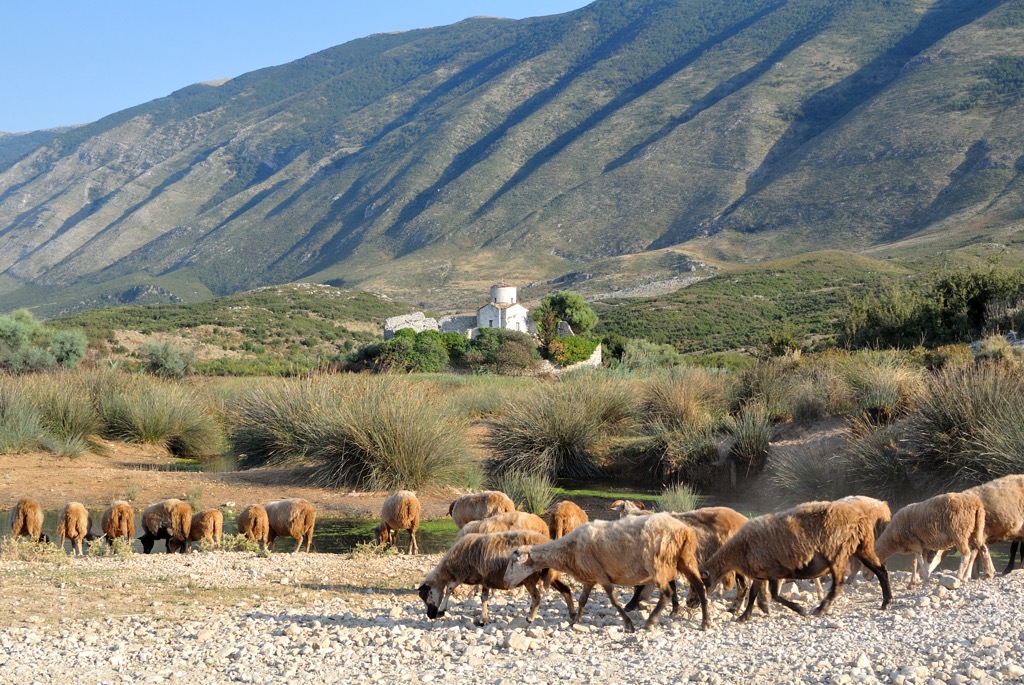
Gjiri I Gramës, or Grammata Bay, can be found in the southwest part of the Karaburun Peninsula. It is a significant tourist spot due to its rich natural and cultural heritage. The cliffs surrounding Gjiri I Gramës feature ancient Greek and Latin writings dating back around 2000 years.
Humans have been using these coves since ancient times. Ships would anchor here, and travelers from different Mediterranean countries would carve their notes on the rock faces, which also served as quarries. These inscriptions include prayers to gods for protection from sea storms and references to historical figures.
Haxhi Ali's Cave is located in the northern part of the Karaburun Peninsula and holds great historical and cultural significance, mainly due to its association with numerous pirate legends. From a realistic perspective, the cave is a bat habitat rather than a pirate's quarters. However, according to legend, the famous pirate Haxhi Ali once sheltered in the cave.
Taking advantage of Karaburun's strategic position, Aliu may have raided ships from various Mediterranean states. After the Venetian military successfully defeated Aliu and his son, legend has it that they were buried on Sazan Island.
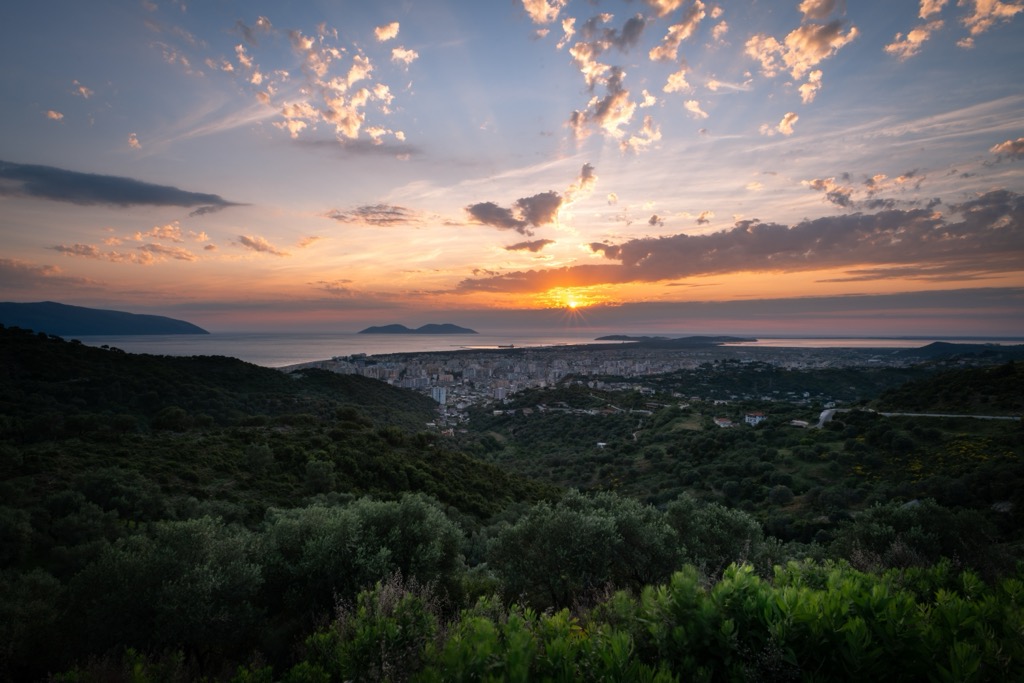
While the Karaburun-Sazan Marine National Park protects underwater habitats, you can still enjoy some hikes around it.
The "Breeze of Two Seas" is the newest trail on the Karaburun Peninsula. It starts from the Cape of Gjuhëza, passes through Maja e Kores, Ravena, the Spring of Dedëhila, Thanasi Peak, and concludes at Llogara Pass. This trail is highly challenging, covering a distance of 53 km (33 mi) through mountainous terrain. Most hikers complete the route in multiple days.
This hike takes you from Orikum towards Brisani Bay. However, before reaching the destination, explore the twelfth-century Marmiroi church. Once you arrive at Brisani Bay, use the rest of the afternoon to relish the crystal-clear waters of the Ionian Sea. The hike will last approximately 3 hours and 30 minutes, with an elevation gain of around 200 m (656 ft).
Breathtaking landscapes surround this hike. Visit the Dukgjoni Cave, an impressive cavern 150 m (492 ft) above sea level featuring an abundance of stalactites and stalagmites.
As you reach the Bay of the English, you can dive into the clear waters equipped with masks and snorkels and explore this picturesque corner. The hike will take approximately 4 hours and 30 minutes, with an elevation change of about 150 m (492 ft).
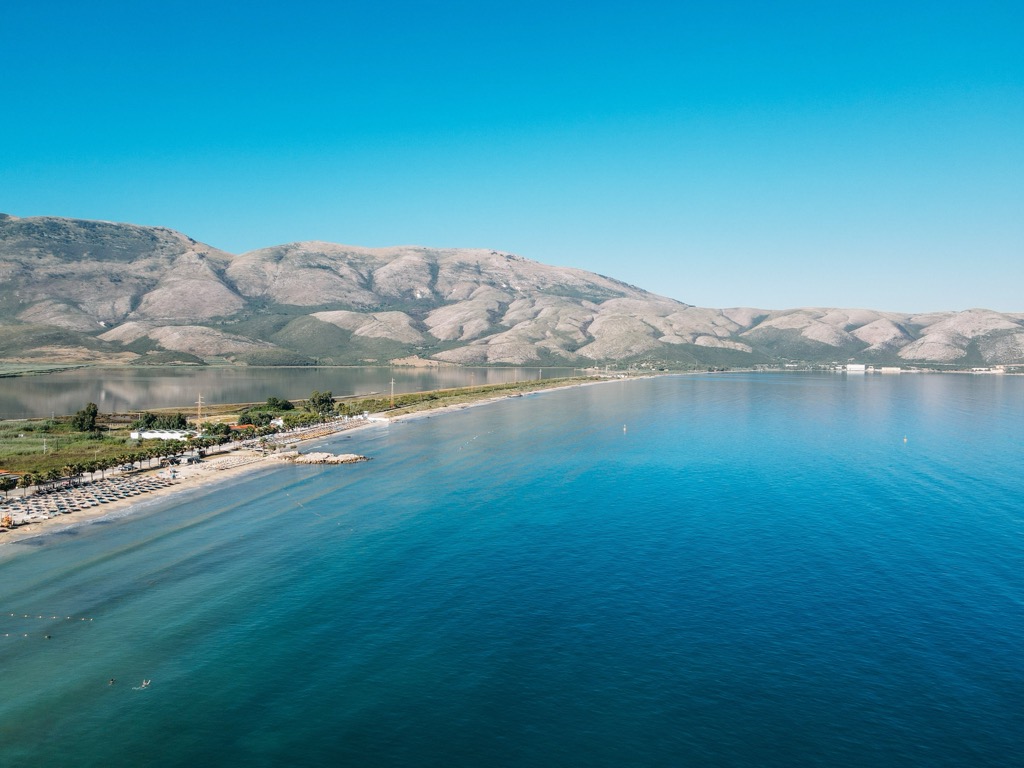
The towns and cities surrounding the park include:
Orikum is a charming town located in the southwestern part of Albania, right along the picturesque coastline of the Adriatic Sea. With around 5,500 residents, it offers a cozy and welcoming atmosphere. Orikum is renowned for its stunning beaches and attracts numerous tourists, especially during summer. Visitors can indulge in beach activities like swimming and sunbathing and watersports like kayaking and paddleboarding.
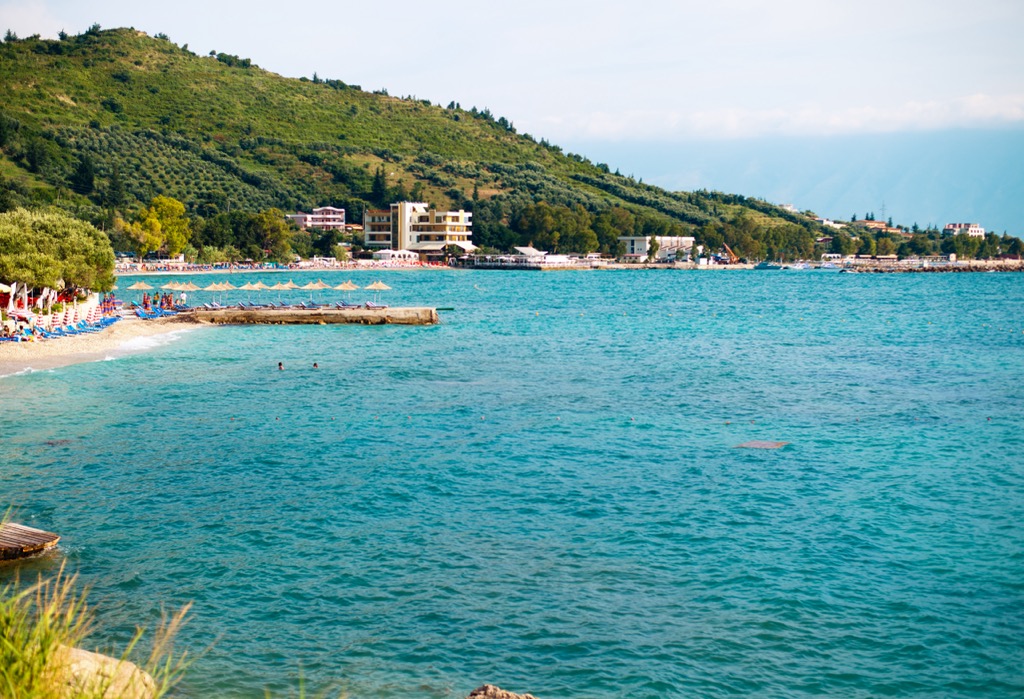
Himare is a coastal town located in southwestern Albania along the shores of the Adriatic Sea. It offers a charming and vibrant atmosphere with approximately 28,000 residents. Himare is renowned for its pristine beaches, attracting numerous tourists.
Vlorë, located in southwestern Albania, is a vibrant coastal city that overlooks the mesmerizing Adriatic Sea. With approximately 187,000 residents, Vlorë offers a charming blend of history, natural beauty, and tourist attractions.
During the summer season, it becomes a sought-after destination for tourists. The pristine beaches are ideal for swimming, sunbathing, and water sports.
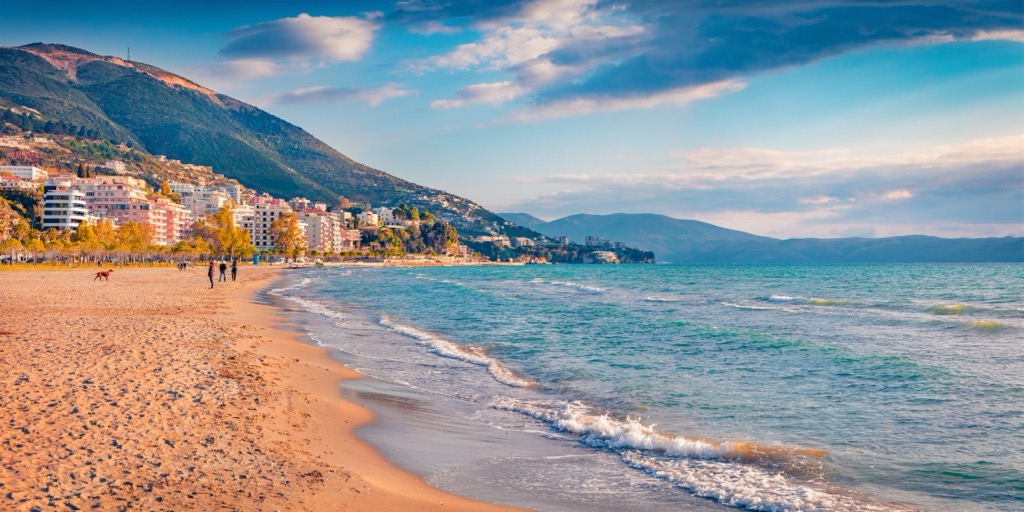
Explore Karaburun-Sazan Marine National Park with the PeakVisor 3D Map and identify its summits.








